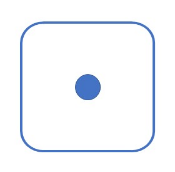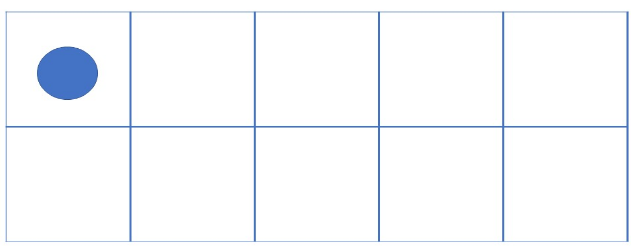CardEd
One-to-One Correspondence with CardEd (Includes 2 FREE Support Resource Downloads!)
In order to develop one-to-one correspondence, children need to have a visual to accompany a numeral.
When introducing numbers, we support children to visualise numbers in various ways e.g. with manipulatives (counters, cubes etc.) or as representations (ten frames, dot pictures etc.).
Our aim is, with repeated practice, for children to internalise the visual and picture the number in their minds. Being able to do so is vital as this lays the foundation for fluidity with numbers and is the basis for mental mathematics.
We have created some free resources for supporting children to visualise numbers. They will be useful also when composing and decomposing numbers (which we will discuss in another post).
For now, we will focus on the numbers 1 – 10 (CardEd set 1). As well as the cards, it will be useful to have cubes / counters as these activities use a ten frame, dice, and dominoes (which can be downloaded for FREE at the bottom of this post!)
Introducing Numbers
Numbers are introduced one-by-one with lots of time given for practise and consolidation. Using the C-R-A strategy, children use concrete objects, then visual representations of each number, before being expected to think about them in an abstract way. This post concentrates on concrete and representational activities.
Concrete Activities
Introducing Number 1
- When discussing the number 1, have a ‘Counting Treasure Hunt’ and ask the child to find 1 of lots of things e.g. Please get me 1 crayon / 1 toy car / 1 puzzle piece / 1 red item etc.
- Give instructions involving the number one e.g. Put 1 cup on the table please / Only put on one sock.
- Ask the child to put their hands on their head and raise 1 finger (It is more challenging if they can’t look, but build up to this; children need to look at and count their fingers when starting out.)
- Find number 1 in the CardEd deck / from a selection of CardEd cards.

Self-Checking
When children have completed their task, e.g. returned with items they have been asked to collect, ask them to check if they were correct. It is important children develop this habit.
Encourage children to touch each item as the count proceeds. Children often make errors when practicing this skill – either by omitting items or counting things twice.
Also have them look to see if they were able to show the correct number when they put their hands on their heads.
Representational Activities
Images of Number 1
Examine visual representations of number 1 (on a die, ten frame etc.) before having children make their own.
The free downloads attached feature dice faces, a ten frame, and dominoes, together with blank templates, to be used to support children in developing a mental picture of numbers.
- Draw dot patterns on dice faces to represent various numbers.
- Show the numbers on a 10 frame.
- Discuss how to represent numbers on a domino. This leads to composing and decomposing, a topic we will discuss in greater detail in a future post.



Images of Larger Numbers
Once the child shows an understanding of 1, repeat the same types of activities with number 2, ensuring the child demonstrates one-to-one correspondence and can distinguish between them, before introducing larger numbers.



Check for Understanding!
- Give child A 1 pencil and child B 2 pencils.
- Discuss how many each child has.
- Who has more?
- Who has the bigger number? etc.
- Give another child 2 pencils and use this to further extend vocabulary.
- How many does each child have?
- Who has more?
- Child C has the same amount / as many as Child B. They have an equal number.
Vocabulary:
- More / less / greater / fewer / bigger / smaller / (not) the same as / (not) as many as / equal to.
Using CardEd
Choose the CardEd cards known to the child e.g. 1 – 5 or 1 – 10.
- Have the child lay them on the table.
- Can they sequence them in order?
- Can they confidently point to each number when asked what it is?
- Can they name each number when you point to it?
- Shuffle the cards and have the child choose one at random.
- Can they match the number to a dice face / ten frame / scatter pattern of dots /domino?
- Can they show you the number using counters / cubes?
- Can they show it with counters on a ten frame?
- Can they represent it with dots on a dice face?
- Can they represent it with dots in a scatter pattern?
- Can they show numbers 7 – 10 on a domino?
- Can they do these in different ways?
- Have the child count the shapes on the CardEd card.
- Can they show this total using counters / cubes?
- Can they represent this total on a dice face?
- Can they show it on a ten frame / domino?
As indicated, developing one-to-one correspondence requires lots of practise and repetition. Using a variety of resources keeps the topic interesting and gives children time to embed their learning. We hope you will find our free downloads very beneficial.
